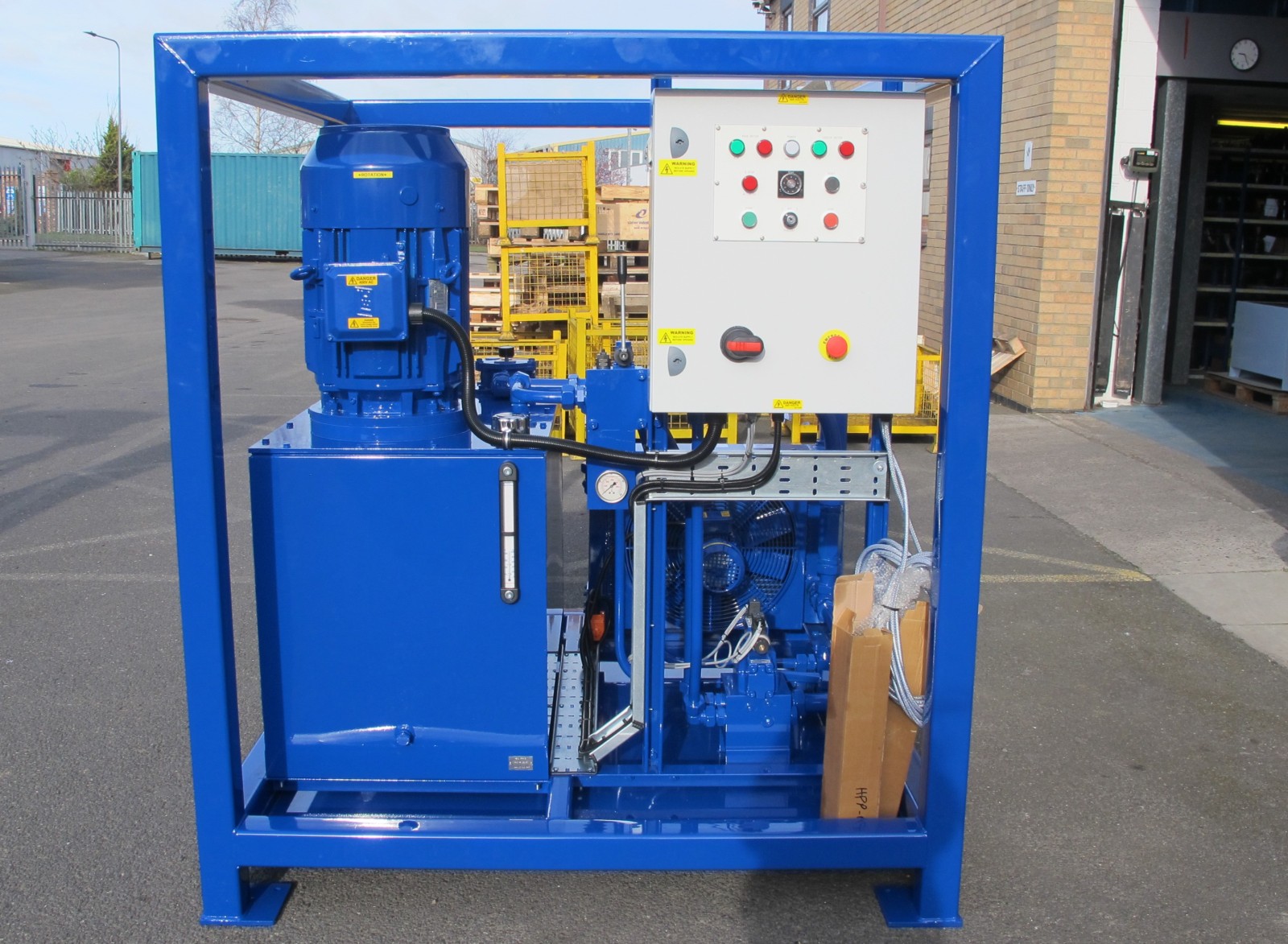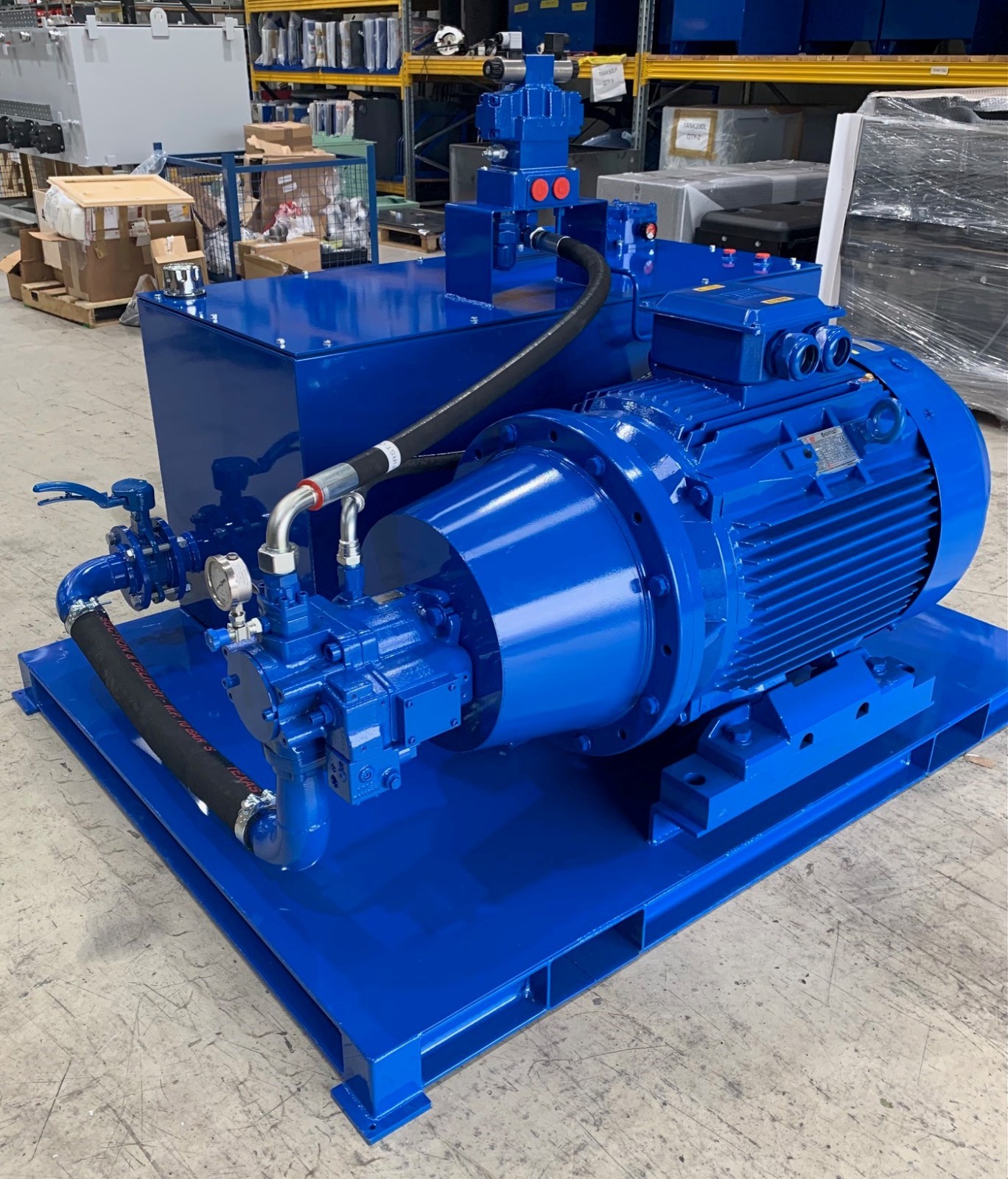

All hydraulic systems work through the same basic concept: Force that is applied at one point is transmitted to another point using an almost incompressible fluid. Hydraulic systems function and perform by using a pressurised fluid that is almost always an oil of some sort.

Hydraulic systems use the principle of Pascal’s law in that hydraulic fluid is used to transmit energy from one point to another. Power is transmitted instantaneously due to hydraulic fluid being almost incompressible. The pressurised fluid acts upon every part of a containing vessel undiminished and then creates power.

Hydraulic circuits are systems that can control where fluid flows, as well as control fluid pressure through a series of interconnected discrete hydraulic components. The most basic hydraulic circuit consists of a reservoir, pump, relief valve, directional control valve, cylinder, connectors and lines.
The purpose of a hydraulic reservoir is to serve as a container for holding the fluid needed to supply the hydraulic system. Hydraulic reservoirs can either be vented to the atmosphere or closed to the atmosphere and pressurised.
A vented reservoir is mounted at the highest point in the hydraulic system as atmospheric pressure and gravity are the forces which cause the fluid to flow to the pump. Air is drawn into and exhausted from the reservoir through a vent line. A filter is usually installed to prevent foreign material from being taken into the system.
Pressurised reservoirs are pressurised either by engine bleed air or by hydraulic pressure produced within the hydraulic system itself. These reservoirs are used in applications where atmospheric pressure is not enough to cause fluid flow to the pump, such as in aircraft, or where vehicles are exposed to undulating terrain with oil moving excessively within the reservoir.

Hydraulic pumps convert mechanical power into hydraulic flow and pressure. By creating a vacuum at the pump inlet, atmospheric pressure forces fluid from the reservoir, through an inlet line and then to the hydraulic pump. Fluid is forced into the hydraulic system through the pump outlet by mechanical action.
This is an example of Pascal’s law in action: “A pressure change occurring anywhere in a confined incompressible fluid is transmitted throughout the fluid such that the same change occurs everywhere.”
The hydraulic pump uses pressurised fluid to turn the motor output shaft by pushing on the gears, gerotor, pistons, or vanes of the hydraulic motor. Hydraulic motors convert fluid pressure into rotary motion or mechanical power.
Hydraulic motors can be either fixed- or variable-displacement with bi- or uni-directional versions. The most common types of hydraulic motors found in hydraulic systems are gerotor, gear, and piston.
Engineered to create force in a straight line, a hydraulic cylinder is a linear actuator powered by hydrostatic energy. Hydrostatic energy is created by the hydraulic pump as pressurised fluid is pumped into the cylinder converting the fluid energy to mechanical energy. In a simple ram-type cylinder this pressurised fluid pushes the rod out of the cylinder.
Hydraulic cylinders are used in an array of power transfer applications and can be single or double action. A single action hydraulic cylinder is pressurised for motion in only one direction, whereas a double action hydraulic cylinder can move along the horizontal (x-axis) plane, the vertical (y-axis) plane, or along any other plane of motion.
The main role of hydraulic fluid is to provide energy transmission through the hydraulic system. However, hydraulic fluids are also used for lubrication, heat transfer and contamination control.
The fluid of choice was traditionally water, but this had some major drawbacks as it was susceptible to temperature and evaporation. In modern hydraulic systems, the fluids used are made from refining mineral oil and manufactured from a variety of blended materials.
There are three common types of hydraulic fluids:
These are the most widely used hydraulic fluids due to their low cost, high quality and availability. The additives used affect the properties of this fluid and offer a variety of specific performance characteristics.
Available in oil-in-water emulsions, water-in-oil (invert) emulsions and water glycol blends. These hydraulic fluids are fire-resistant due to their high water content. Due to water being susceptible to temperature changes and evaporation certain components need to be checked for compatibility before using this hydraulic fluid.
Often more expensive than petroleum-based fluids and with lower wear resistance, water-based hydraulic fluid tends to only be used in applications requiring fire resistance.
These are man-made lubricants that work well in high-pressure and high-temperature systems. Fire resistance, low friction, natural detergency and thermal stability are offered with these hydraulic fluids. However, they are usually more expensive and slightly toxic.

Hydraulic systems have many advantages over electric or pneumatic systems such as reduced noise, pump backup, and use in high-pressure operations. Hydraulics are used across a huge number of industries all across the world. When you get in a car you will be experiencing hydraulic systems at work with the use of the brakes.
The applications of hydraulic systems are too vast to list them all here, so we will mention a few to give examples.
Much of the construction industry uses hydraulic-based heavy equipment in the form of bulldozers, forklifts, cranes, etc.
In airplanes hydraulics controls, landing gears, doors, brakes and much more. Hydraulic systems are also in place for refueling and moving.
Used for moving people or goods hydraulic lifts can be seen in many industries such as automobile, waste removal, shipping and construction.
Reducing the force needed to change the direction of a vehicle, hydraulic steering is an important part of mobile applications.
Posted by admin in category Hydraulic Systems Advice on Wednesday, 27th July 2022
Call our knowledgeable team Mon–Fri 8:30am–5pm
Systems & Components Division 01427 874445
sales@hydrastore.co.uk
Hose Division 0121 326 6395
hoses@hydrastore.co.uk
Hydrastore use cookies to make the site run smoothly, enhance the content and to gather information on how you use it in order to improve and personalise your experience. See our Privacy Policy